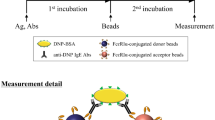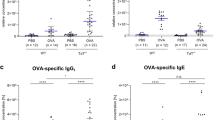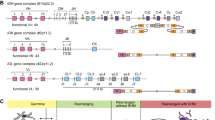Abstract
Purpose: The presence of functionally significant human interleukin-4 receptor sequence variants, GIn551Arg and 11e50Val, was examined in four anonymous New York State populations defined by ethnic origin. These variants were studied because they are associated with atopy or atopic asthma whose prevalence varies in different populations.
Methods: PCR/RFLP (11e50Val) and PCR/allele-specific oligonucleotide hybridization (GIn551Arg) assays were developed to detect both polymorphisms in 855 newborn screening specimens.
Results: Arg551 was most frequently found in Blacks (allele frequency of 68%). However, the 11e50 allele was most common in Whites (allele frequency, 87%). Significantly more Blacks had chromosomes bearing both of the “enhanced signaling” variants (11e50/Arg551).
Conclusions: Enhanced IL-4R signaling is associated with increased IgE production (atopy). Therefore, our data suggest that the African American population may be at increased risk for diseases, including asthma, which are associated with atopy. These data also emphasize the importance of determining the frequencies of single nucleotide polymorphisms in different populations before drawing conclusions from allele association studies, since the background allele frequencies may be disparate between different populations.
Similar content being viewed by others
Article PDF
Author information
Authors and Affiliations
Rights and permissions
About this article
Cite this article
Caggana, M., Walker, K., Reilly, A. et al. Population-based studies reveal differences in the allelic frequencies of two functionally significant human interleukin-4 receptor polymorphisms in several ethnic groups. Genet Med 1, 267–271 (1999). https://doi.org/10.1097/00125817-199909000-00005
Issue date:
DOI: https://doi.org/10.1097/00125817-199909000-00005
Keywords
This article is cited by
-
Association of Q551R polymorphism in the interleukin 4 receptor gene with nonatopic asthma in Slovenian children
Wiener klinische Wochenschrift (2010)



